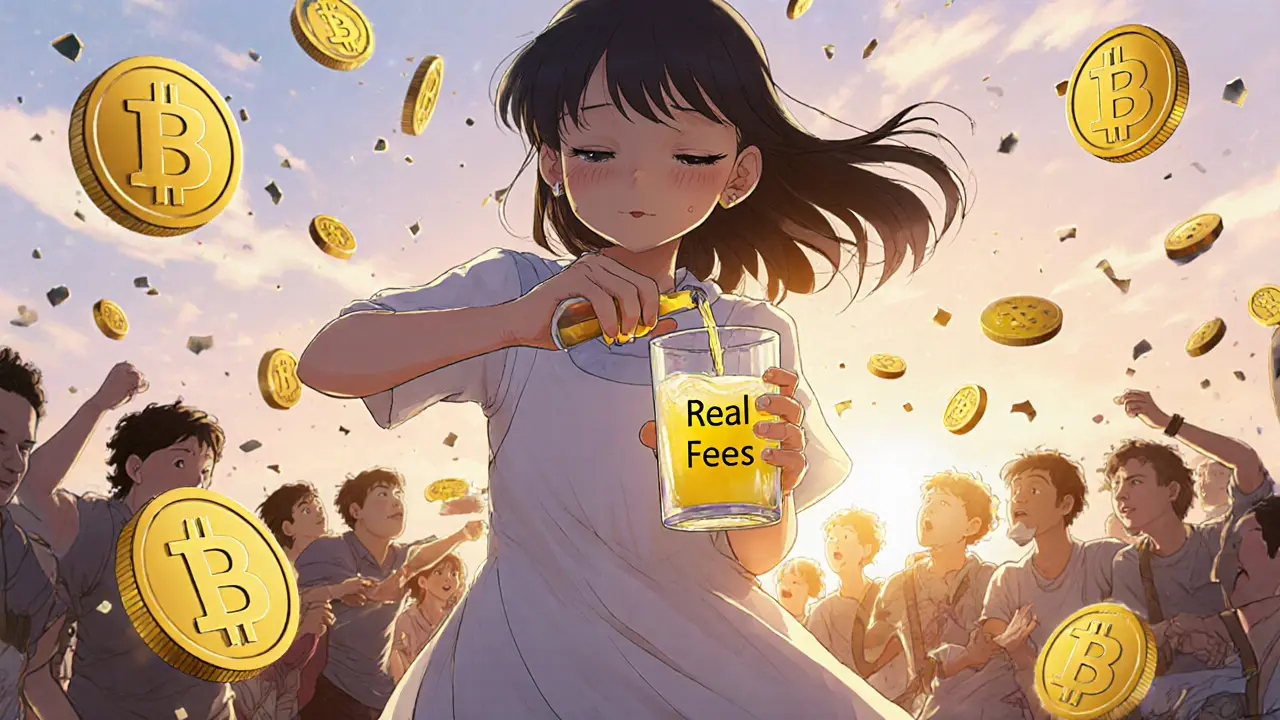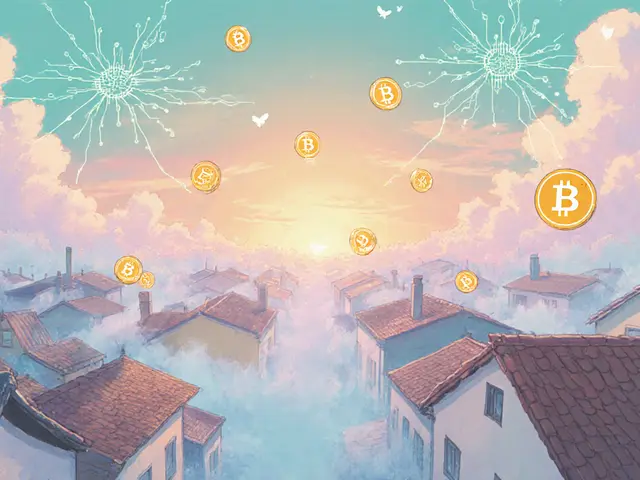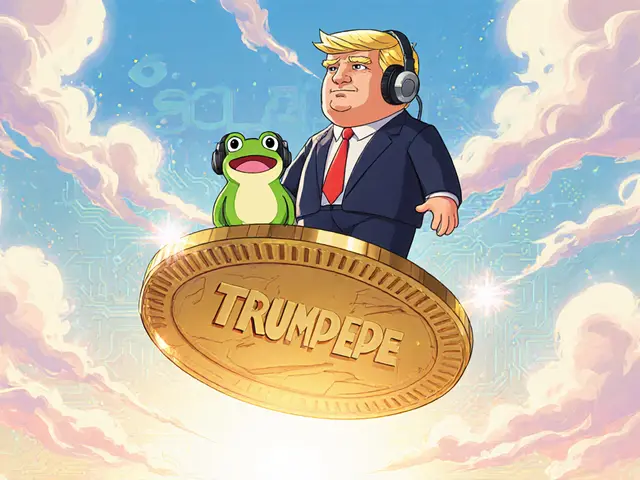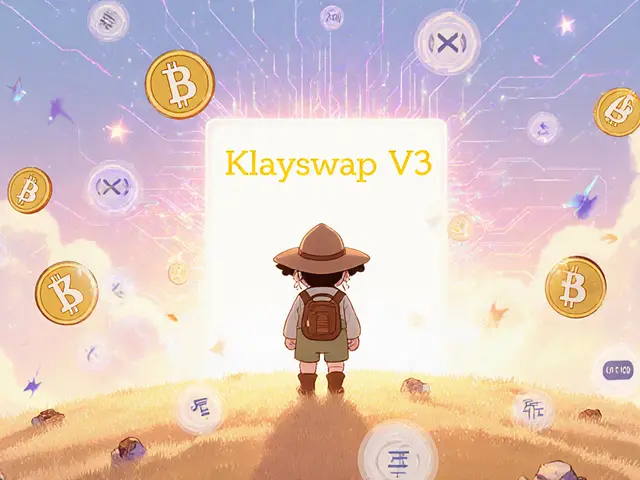Yield Farming Sustainability Checker
Check Your Yield Farm
Determine if a yield farming opportunity is sustainable based on the article's key criteria.
When you hear "yield farming," most people think of locking up crypto to earn more crypto. But not all yield farming is built the same. Some strategies drain the system dry. Others keep it running for years. The difference? Sustainable vs unsustainable yield farming.
What Is Yield Farming, Really?
Yield farming is when you lend, stake, or provide liquidity to a DeFi protocol - and get paid in tokens. It sounds simple: deposit ETH and USDC into a pool, earn interest, and maybe get bonus tokens on top. But behind the scenes, some protocols are just printing new tokens to pay you. That’s not income. That’s inflation.
Think of it like a lemonade stand. If you pay yourself $10 every hour just to keep the stand open, you’re not making money - you’re burning cash. Unsustainable yield farming works the same way. It pays you with new tokens that have no real value backing them. Once the funding runs out, the rewards vanish. And often, the token price crashes right after.
Unsustainable Yield Farming: The Quick Cash Trap
Unsustainable yield farming relies on three things: high token emissions, low demand, and hype.
- High token emissions: Protocols issue hundreds or thousands of new tokens every day to attract users. Some even give out more in rewards than the total value locked (TVL). That’s math that can’t last.
- Low demand: If no one actually wants to use the protocol beyond the rewards, there’s no real utility. The token is only valuable because people are chasing APYs.
- Hype cycles: Social media explodes with "1000% APY!" posts. People rush in. Then, when the rewards drop, they rush out - taking the token price with them.
Remember the 2021 "DeFi summer"? Dozens of new protocols launched with 100%+ APYs. Within weeks, most were dead. One project, Harvest Finance, paid out over $100 million in rewards before its token dropped 98%. Users didn’t make money - they lost it.
Why? Because the protocol was funding rewards from its own treasury. No revenue. No fees. No real users. Just tokens being printed to lure in liquidity.
Sustainable Yield Farming: The Long Game
Sustainable yield farming doesn’t rely on printing tokens. It relies on real revenue.
Here’s how it works:
- Protocol fees fund rewards: Instead of minting new tokens, the protocol takes a cut of trading fees, borrowing interest, or other services. That revenue is shared with liquidity providers.
- Low, steady APYs: You might earn 5-15% instead of 100%. But it doesn’t disappear in a week.
- Real usage: People are using the protocol to trade, borrow, or hedge - not just to farm rewards.
Take Uniswap. Its liquidity providers earn a share of the 0.05%-0.3% fee on every trade. That’s real money flowing in from real users. The rewards aren’t inflated - they’re backed by volume.
Another example: Aave. Borrowers pay interest. That interest goes to lenders. No new tokens needed. Just clean, transparent economics.
Sustainable yield farming is like owning a rental property. You don’t get rich overnight. But if the tenants pay rent every month, you keep earning - year after year.

How to Tell the Difference
Here’s a quick checklist to spot unsustainable yield farming:
- Is the APY over 50%? If yes, and the protocol is less than 6 months old - run.
- Are rewards paid in the protocol’s own token? If it’s not a stablecoin or major coin like ETH or BTC, that’s a red flag.
- Is the TVL higher than the token’s market cap? That means they’re paying you more in tokens than the tokens are worth.
- Is there any real revenue data? Check the protocol’s dashboard. Do they show daily trading volume? Borrowing fees? If not, they’re likely just printing tokens.
- Is there a token buyback or burn mechanism? Sustainable projects often burn tokens to reduce supply. Unsustainable ones never do.
Tools like DeFi Llama and Dune Analytics let you see real-time revenue vs reward data. Look for protocols where revenue > rewards. That’s a sign of health.
The Hidden Cost of Unsustainable Farming
It’s not just about losing money. Unsustainable yield farming hurts the whole ecosystem.
- It floods the market with worthless tokens: Thousands of new tokens are dumped every month. Most never see a price above $0.01.
- It erodes trust: Every rug pull makes people afraid of DeFi. That slows real innovation.
- It wastes resources: Mining and staking use energy. If the system is built on fake rewards, that energy is wasted.
Compare that to sustainable farming. When protocols earn real fees, they can invest in audits, security upgrades, and better interfaces. They build something that lasts.

What’s Changing in 2025?
After years of pump-and-dump cycles, the market is waking up.
Investors now ask: "What’s your revenue?" not "What’s your APY?"
Major protocols like Compound, Curve, and MakerDAO have shifted focus from token emissions to fee-based models. Even newer projects like Frax Finance and Lyra are designing reward structures that scale with usage - not with printing.
Regulators are also paying attention. In 2024, the SEC flagged several high-yield protocols for operating like unregistered securities. That’s forcing projects to clean up their models - or disappear.
The result? APYs are lower. But the projects that remain? They’re stronger.
How to Farm Sustainably in 2025
Here’s how to stay safe and still earn:
- Stick to top 10 DeFi protocols: Uniswap, Aave, Compound, Curve, MakerDAO. These have proven revenue streams.
- Use stablecoin pairs: USDC/USDT pools have lower volatility and often pay steady fees.
- Check revenue-to-reward ratios: On Dune, search for the protocol’s dashboard. If rewards are 3x revenue - avoid.
- Don’t chase new launches: Wait 30 days. If the token price hasn’t crashed and the TVL is stable, then consider it.
- Diversify across protocols: Don’t put all your funds in one farm. Spread risk.
Also, consider staking instead of farming. Staking ETH or other PoS coins gives you 3-5% APY with near-zero risk. It’s not flashy, but it’s real.
Final Thought: It’s Not About the Yield - It’s About the Foundation
Yield farming isn’t a lottery. It’s a business. And like any business, if you’re paying yourself with fake money, you’re not building wealth - you’re building a bubble.
Sustainable yield farming is about building systems that last. That means real users. Real fees. Real value. Not just tokens printed to fool you into thinking you’re rich.
The next time you see a 200% APY, ask yourself: "Who’s really paying for this?" If the answer is "nobody," walk away.
What’s the biggest red flag in unsustainable yield farming?
The biggest red flag is when the protocol pays rewards in its own token - and those rewards are higher than the protocol’s actual revenue. If the APY is over 50% and the project is less than 3 months old, it’s almost certainly unsustainable. Check DeFi Llama for revenue data - if it’s zero or near zero, you’re being paid with future promises, not current value.
Can sustainable yield farming still be profitable?
Yes - and more reliably than unsustainable options. While APYs are lower (typically 5-15%), they don’t vanish overnight. Protocols like Uniswap and Aave have paid consistent rewards for years because they’re funded by real trading and borrowing fees. Over time, the compounding effect and lower risk make sustainable farming more profitable overall.
Is staking better than yield farming?
For most people, yes. Staking ETH, SOL, or other PoS coins gives you 3-7% APY with almost no risk of impermanent loss or protocol failure. Yield farming offers higher returns but comes with smart contract risk, token volatility, and potential rug pulls. If you want safety and steady income, start with staking. If you want to farm, only do it with well-established protocols.
Why do people keep falling for high-yield farms?
Because of FOMO and misinformation. Social media influencers push "1000% APY" posts without explaining the risks. New users see big numbers and assume it’s free money. They don’t realize that if a protocol pays you more than it earns, it’s just printing tokens - and those tokens will eventually crash. It’s not a bug - it’s a feature of the scam.
Are there any sustainable yield farming projects launched in 2025?
Yes. Projects like Lyra (options trading) and Frax Finance (algorithmic stablecoins) launched in early 2025 with fee-based reward models. They don’t rely on token emissions. Instead, they take a cut of trading fees and distribute it to liquidity providers. Their APYs are modest - around 8-12% - but they’ve stayed live for over a year with growing TVL and no token crashes.







Leo Lanham
November 8, 2025 AT 00:57 AMBro, I jumped into a 300% APY farm last month and woke up to my portfolio in ashes. Not even a funeral, just a ghost town. Now I just stare at my ETH staking rewards like they’re my only friends. 🥲
Colin Byrne
November 9, 2025 AT 21:38 PMIt is, without question, an empirical observation that the majority of yield farming protocols operate under a Ponzi-like incentive structure wherein the distribution of newly minted tokens is not correlated with any tangible economic output. This is not innovation-it is financial entropy dressed in DeFi clothing.
Brian Webb
November 11, 2025 AT 17:08 PMI get why people chase those insane APYs. I did too. But after losing a chunk of my savings on a project that vanished in 11 days, I learned to check the revenue numbers first. If it’s not paying itself, it’s just stealing from the next guy. No shame in waiting.
Whitney Fleras
November 11, 2025 AT 22:46 PMThank you for writing this. I’ve been scared to jump into DeFi after hearing so many horror stories. Your breakdown made it feel less like gambling and more like investing. I’m going to start with Uniswap and take it slow.
Angie Martin-Schwarze
November 12, 2025 AT 08:12 AMi just wanna make money not think bout all this lol. why does it have to be so complicated??
Janna Preston
November 12, 2025 AT 12:42 PMWait-so if a protocol pays rewards in its own token, and the token’s price is falling, does that mean I’m technically getting paid in something that’s worth less every day? That’s wild.
Meagan Wristen
November 14, 2025 AT 06:16 AMSo true about the rental property analogy. I’ve got a couple of rental units in real life-steady rent, no drama. Same vibe with Aave. Why risk it all for a flash in the pan? Been staking ETH for a year now and honestly? Peace of mind > 500% APY.
Becca Robins
November 15, 2025 AT 21:59 PM200% APY? Bro, that’s just the universe whispering ‘RUN’ 😭🔥
Alexa Huffman
November 17, 2025 AT 00:45 AMI love how you compared sustainable yield farming to owning a rental property. That’s such a clear way to explain it to someone who’s never touched crypto before. Maybe we need more analogies like this to bring people back to reality.
Matthew Gonzalez
November 17, 2025 AT 06:26 AMIt’s funny how we call it ‘farming’ when it’s really just harvesting other people’s hope. The real yield is in learning not to fall for it. The rest? Just noise.
Grace Huegel
November 18, 2025 AT 11:29 AMHow quaint. You treat DeFi like a garden, as if it were governed by natural laws. The market is a predator. It doesn’t care if your model is ‘sustainable’-it only cares if someone’s still stupid enough to feed it.
Anthony Allen
November 18, 2025 AT 21:28 PMMy buddy jumped into a new farm last week-150% APY, all in their own token. He says it’s ‘too good to pass up.’ I told him if it sounds like a lottery ticket, it probably is. He’s still in. I’m just waiting for the meme.
Megan Peeples
November 19, 2025 AT 05:44 AMWait-so you’re saying if the APY is over 50% AND the protocol is under six months old AND the token is the only reward… then it’s a scam? That’s it? No deeper analysis? That’s… lazy. I’m disappointed.
Evan Koehne
November 20, 2025 AT 17:08 PMOh wow, a guide on how to not get robbed. Groundbreaking. Next up: ‘How to avoid drinking poison when the cup says ‘free energy’ on it.’
Leo Lanham
November 21, 2025 AT 10:45 AMyou say run but i see people still rich from those farms. you just scared of risk. real men take the 1000% and ride it till the end